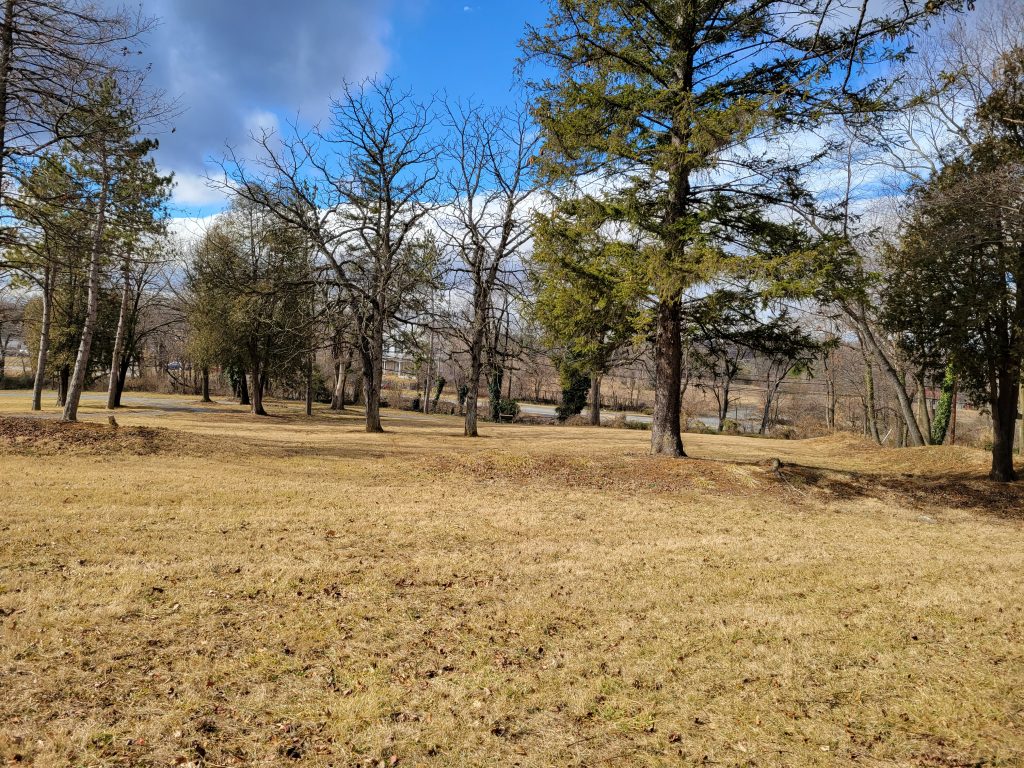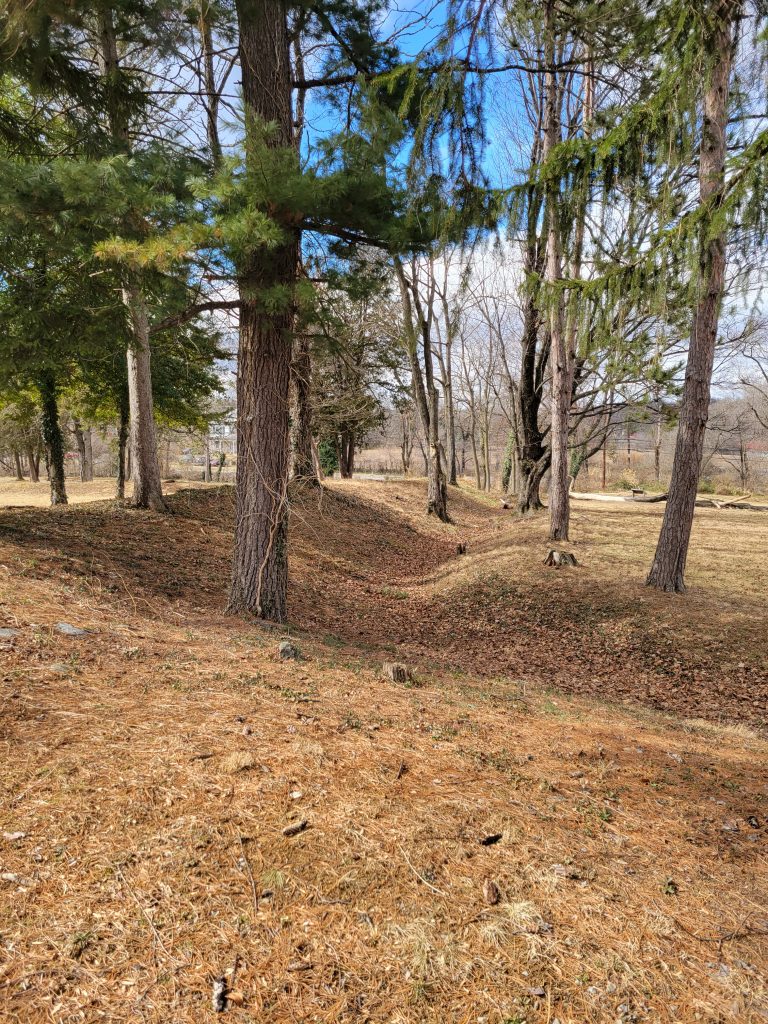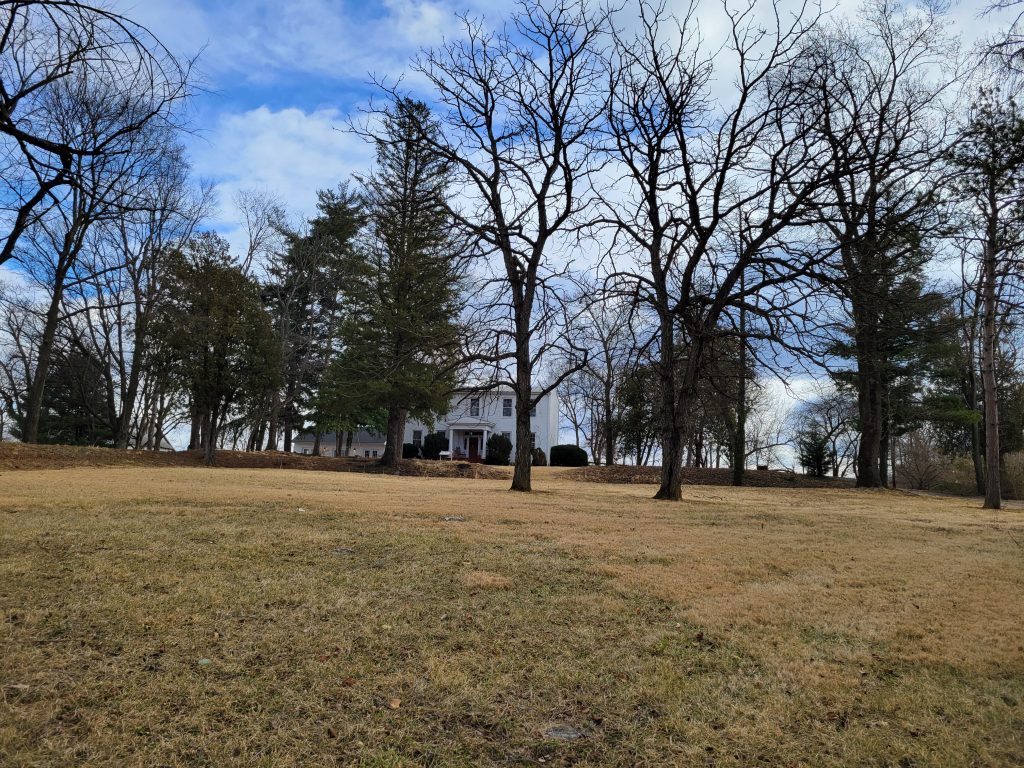Forts: Fort Collier — “It Seems Strong and Well Built”
 In the evening of September 19, 1864, after the Third Battle of Winchester, Union cavalry commanders jousted their egos and boasted of their exploits that day. In Wesley Merritt’s division, George Custer and Charles Russell Lowell, Jr. playfully jabbed at each other. Their troopers had operated on the Federal right, eventually charging along the Valley Pike, attacking toward the fortifications of Fort Collier and sending Confederate cavalry and infantry dashing for cover elsewhere.
In the evening of September 19, 1864, after the Third Battle of Winchester, Union cavalry commanders jousted their egos and boasted of their exploits that day. In Wesley Merritt’s division, George Custer and Charles Russell Lowell, Jr. playfully jabbed at each other. Their troopers had operated on the Federal right, eventually charging along the Valley Pike, attacking toward the fortifications of Fort Collier and sending Confederate cavalry and infantry dashing for cover elsewhere.
Custer — pleased with his captured battleflag trophies — needled Lowell, asking where were his captured banners? Lowell retorted darkly, “Oh, flags do not hurt anybody. Why don’t you capture some artillery?”[i]
On one piece of sloping high ground along the historic Valley Pike, the trenches of Fort Collier provided the earthen backdrop to the intense fighting in, around, and before the fortifications. Confederates started the first construction on the fort began in 1861 to defend the road network and subsequent occupiers of the Winchester areas added to the trenches that eventually encircled the Benjamin Stine house.

In August 1861, a civilian girl named Harriet H. Griffith, visited Fort Collier and described it in her diary, saying, “It seems real strong and well built. There is a high embankment of sand bags, barrels, and brush covered with dirt, part sodded over. They intend to sod it with a big ditch on the lower side. They have completely surrounded Stine’s House which is now occupied by soldiers, some of whom were working there, some cooking, some washing, some on guard, and some lounging, and some sleeping….” She concluded: “I hope it will never be used.”[ii]
The fort escaped action in the First and Second Battles of Winchester, but made up for lost action in September 1864 during the Third fight. Confederate General Jubal Early used Fort Collier to anchor the left of his line. Unfortunately, it’s not quite clear how many infantrymen and artillery he piled around the position that September day. Initially assisted with artillery fire from Star Fort (Confederate-held at the beginning of the battle), the defenders of Fort Collier planned a stout resistance. However, the battle unraveled for the Confederates at other points on the battlefield, sending hundreds of gray-clad soldiers racing back toward Winchester in retreat.

Fort Collier had men, guns, and defenses, but they no longer had an anchoring purpose in Early’s broken lines. When Union cavalry galloped up the Pike in attack waves, they pushed the Confederate defenders to the fort, then out of the fort. Colonel George S. Patton commanded the remnants of three regiments, opposing the advance on the fortifications and briefly forming Napoleonic style infantry squares in an effort to fight off the cavalry. Overrunning Fort Collier fairly quickly, the Union troopers found two abandoned cannons, “miserable rac-a-bone horses,” and no breathing enemy.
Today, some of the earthworks of Fort Collier have been preserved, but the open plain where the Union cavalry charged and the Confederate infantry formed squared near the fort is built up or obscured. The fort still holds its stories, though, and the earthworks are covered with “sod” and in some areas protected on the south side by thick brush. A house stands at the center, but it is not the Stine House of the Civil War era. The current structure was constructed just after the war, but still lends the idea of a civilian home encircled by a earthen fort in the fortification chain around Winchester.
Like many preserved areas, a little hint of imagination can help a visitor re-envision on the site and the surrounding topography. And – perhaps – if one is inclined to listen, the imagination may summon the thunder of the cannon, the pounding of hoofbeats, and the wild yells of the young cavalry commanders as they took flags and artillery on that September day.

Sources:
[i] Carol Bundy, The Nature of Sacrifice: A Biography of Charles Russell Lowell, Jr, 1835-64, (New York, Farrar, Straus & Giroux, 2005). Page 247.
[ii] Quotation from an interpretative panel at Fort Collier.
Which earthwork did Fitzhugh Lee cavalry defend
Thanks for the fresh look at Fort Collier. Couple of questions: Gen. Fitz Hugh Lee writes in his after action report that Patton moved to the right to resist Crooks attack while Lee dealt with the Union Cavalry. The infantry action occurred along Red Bud Run near Hackwood. After initial success Patton was flanked and Devin’s Cavalry cut him off. Lee reported that Patton was wounded attempting to meet these attacks. Do you have a contemporary account that places Patton at Fort Collier? Based on Lee’s report, Patton was out of action by the time Lowell overran the fort. Based on the Jed Hotchkiss map the Fort was occupied by Chapman’s battery and supported by Forsberg and Smith’s brigades of Wharton’s division posted behind stone walls to the right of the fort in the modern industrial park and Payne’s brigade to the left on the pike. Thanks.